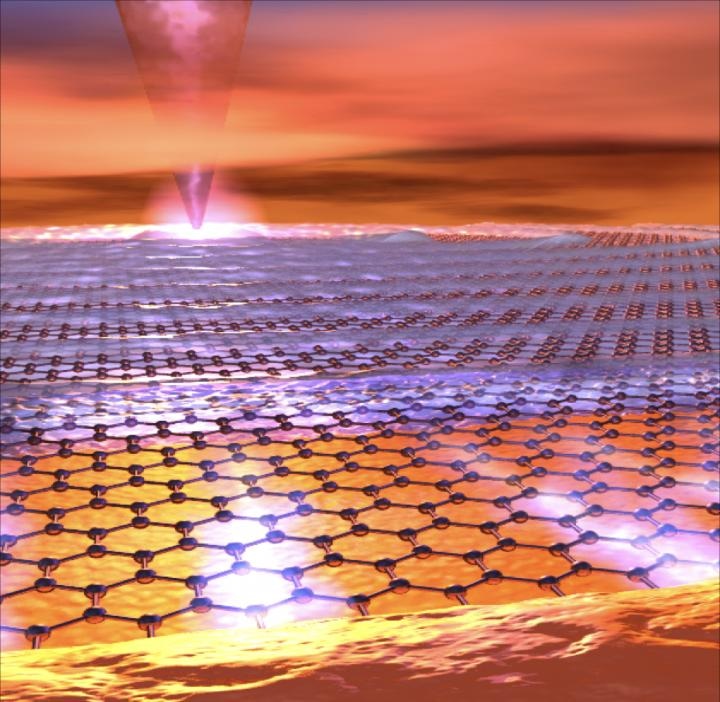Jun 9 2017
The concept of using light to “see” the quantum nature of an electronic material has been studied by Researchers.
This analysis was made by capturing light in a net of carbon atoms and then slowing down light so that it passes almost as slow as how the electrons move in graphene. This indeed results in something special taking place: light and electrons begin to move in concert, launching their quantum nature at such large scale that it could be seen with a special type of microscope.
 Electrons and light are moving in concert along the graphene sheet. Credit: ICFO/ F. Vialla
Electrons and light are moving in concert along the graphene sheet. Credit: ICFO/ F. Vialla
The experiments were executed with ultra-high quality graphene. The Researchers used a special antenna for light that is capable of scanning over the surface at a distance of a few nanometers in order to excite and image the ultra-slow ripples of light in the graphene, also known as plasmons. With this near field nanoscope, the Researchers were able to observe that the light ripples on the graphene travelled more than 300 times slower than light, and this was considered to be dramatically different when compared to what is expected from classical physics laws.
The research has been published in Science by ICFO Researchers Dr. Mark Lundeberg, Dr. Achim Woessner, headed by ICREA Prof. at ICFO Frank Koppens, in partnership with Prof. Hillenbrand from Nanogune, Prof. Polini from IIT and Prof. Hone from Columbia University.
Referring to the accomplished experiments, Prof. Koppens states that "Usually it is very difficult to probe the quantum world, and to do so it requires ultra-low temperatures; here we could just "see" it with light and even at room temperature".
This technique provides futuristic opportunities for exploring a wide range of new quantum materials, including superconductors in which electricity can travel without energy consumption, or topological materials that permit the processing of quantum information with topological qubits. In addition, Prof. Hillenbrand states that "this could just be the beginning of a new era of near field nanoscopy".
This discovery may eventually lead to understanding in a truly microscopic fashion complex quantum phenomena that occur when matter is subject to ultra-low temperatures and very high magnetic fields, like the fractional quantum Hall effect.
Professor Polini, IIT